Sacramento has long been called the City of Trees. In the 900-square mile area we serve, SMUD’s vegetation management team performs vegetation inspection and planning, and oversees the maintenance of more than 200,000 trees. That’s just the beginning of the story because our team also maintains the easements and rights of way in or adjacent to SMUD’s generation, distribution, and transmission infrastructure, much of it in the foothills and mountains of the Sierra Nevada.
Every year, we manage more than 500 miles of transmission right-of-way corridors in order to ensure reliable, safe delivery of electrical energy throughout the SMUD system. Regular schedules to clear vegetation away from power lines, poles, transformers, substations, and other various SMUD facilities are vital to reduce the chance of power outages.
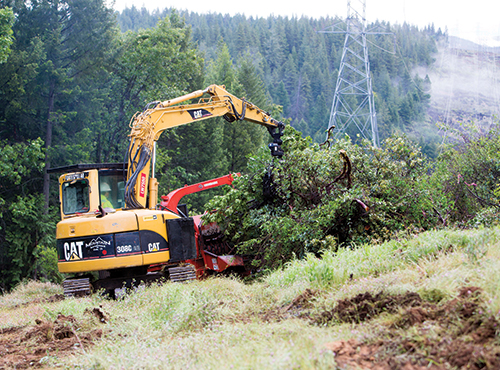
The transmission corridors are key not only to SMUD’s power grid, but also the grids of the utilities that comprise the Balancing Authority of Northern California (BANC). BANC is a Joint Powers Authority that matches generation to load and coordinates system operations with neighboring BA’s. These include SMUD, Modesto Irrigation District, Roseville Electric, Redding Electric Utility and Trinity Public Utility District as its founding members. BANC is the third largest Balancing Authority in California and the 16th largest Balancing Authority within the WECC area. Millions of northern Californians’ electricity needs are dependent on the system and it’s crucial that every preventive measure is taken to keep the lights on.
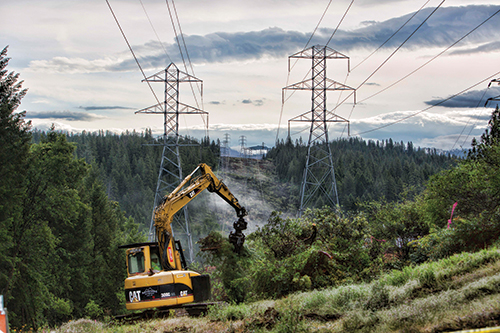
Balancing power, reliability, and the environment
SMUD has always been very concerned and very diligent about our environmental footprint. As a utility, we have realized trees’ value and benefits for a long time. Not only do local, state, and federal laws require vigilance in maintaining vegetation near our facilities, our board of directors does, as well. As a municipal utility, a board of seven directors elected by our customers sets our policies, and SMUD staff is responsible for carrying out those policies.
Environmental leadership is part of our vision statement and is a core value of SMUD set by our board, which is committed to it through community engagement, continuous improvement in preventing pollution, reducing carbon, energy efficiency, and conservation. Our board mandates that we conduct our business affairs and operations accordingly.
Balancing the competing constraints of keeping the power on and Mother Nature happy presents a significant challenge, which we meet every day.
Recognition for our work
In October, the Right of Way Stewardship Council (ROWSC) approved SMUD as a founding accredited utility. ROWSC is an accreditation program that establishes standards for responsible right-of-way vegetation management along transmission corridors. The program promotes the application of Integrated Vegetation Management and best management practices in order to maintain power system reliability and address ecological concerns.
The accreditation provides standards of excellence with regard to maintaining easements and rights of way for environmental stewardship and presents the opportunity for companies to demonstrate their commitment to such standards.
The recognition makes SMUD just one of seven founding accredited utilities and power companies in the United States along with Arizona Public Service, Vermont Electric Company, New York Power Authority, Pacific Gas and Electric (PG&E), Bonneville Power Administration, and AltaLink in Alberta, Canada.
SMUD is honored to earn the distinction. It has real value in the utility industry. The ROWSC design follows the lead of the Electric Power Research Institute’s Standards for Assessing Performance of Integrated Vegetation Management on Rights-of-Way and is modeled after other well-established accreditation programs found in the forest industry such as the Forest Stewardship Council and Sustainable Forestry Initiative. The ROWSC has established management standards based on a set of predetermined principles, requires a formal application process, and enlists third-party auditors to ensure compliance with standards.
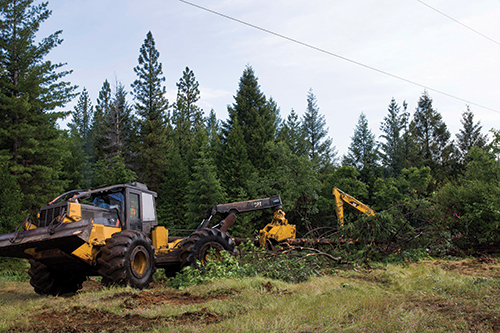
As ROWSC stated in its awarding of the accreditation: “This third-party recognition by ROWSC ensures an independent, proven process to convey credibility and bring recognition to IVM programs. The benefits of the accreditation reach beyond the practitioner’s sphere; it has the potential to positively impact the industry, communities, stakeholders and agencies.”
Fire prevention
The accreditation also means we’re doing everything we can to keep our communities safe. If not managed properly, tree branches if allowed to grow too close, or hazard trees adjacent to transmission and distribution lines, can catch and cause fires and/or damage the lines causing our customers to go dark. Being selected as a ROWSC accredited utility means that we’re doing everything in our power to proactively manage vegetation and keep our customers safe and their lights on.
Late in the summer of 2014, arson sparked what’s known as the King Fire, which scorched nearly 100,000 acres of El Dorado County, in the Sierra Nevada. Some of that fire came very close to our transmission facilities which move power generated from our Upper American River Project (UARP) hydroelectric plants. The UARP, which we call the Stairway of Power, includes 11 dams, 8 powerhouses containing 11 turbines and six auxiliary dams and dikes. The UARP’s generating capacity of 688 megawatts of clean, non-carbon-emitting electricity, in a good water year, provides SMUD with about 20 percent of our power mix.
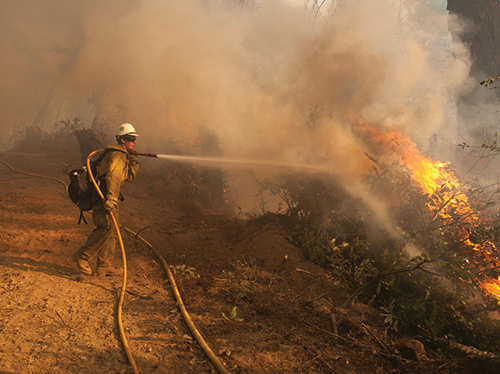

Firefighters from across California valiantly battled the flames for several days to gain control. Bravery, teamwork and mutual aid delivered success, as did a timely rainstorm. SMUD’s resources also helped immensely. Particularly, SMUD’s reservoirs holding precious water were valuable to ground and airborne firefighting efforts. Roads to SMUD UARP facilities provided easier routes to quickly and effectively transport firefighting personnel and equipment deep into heavily forested areas. A crucial turning point in the battle came from SMUD’s transmission line rights of way that had been cleared and vegetation maintained which minimized the fuel under the lines. Those transmission corridor rights of way provided critical fire breaks for firefighters in slowing and eventually stopping the fire’s spread.
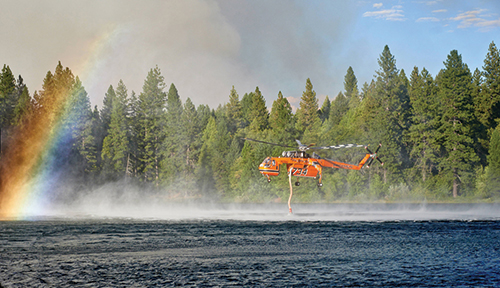
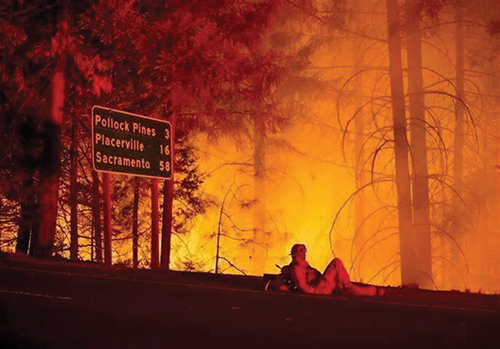
Starting in early May 2015, SMUD and PG&E began vegetation management work in the adjacent area to Apple Hill to reduce the threat of wildfires and ensure reliability of high-voltage electric transmission lines focused near the area where the King Fire burned. In light of the severe fire-related risks caused by California’s prolonged drought, this work is crucial in minimizing fuel sources and preventing a repeat of the disastrous King Fire.
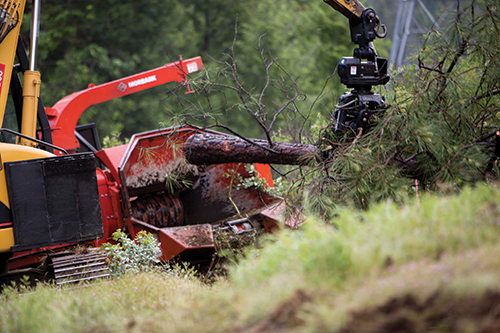
Going forward
SMUD has earned a lot of respect from environmental groups over the years for our efforts. We work hard to leave the areas where we work the way we found them respecting the leave-no-trace philosophy that is typical of all SMUD projects. When we do need to intervene in the natural habitat, we do so to make the situation better and safer. The ROWSC accreditation is affirmation of that approach. We encourage other utilities to seek the accreditation. It’s good for our industry and even better for the common good.
About the Author
 Steve Hallmark is SMUD’s Manager of Vegetation Management. Steve has more than 30 years of utility vegetation management experience. He is considered a very knowledgeable subject matter expert on a national level.
Steve Hallmark is SMUD’s Manager of Vegetation Management. Steve has more than 30 years of utility vegetation management experience. He is considered a very knowledgeable subject matter expert on a national level.
In addition to his work at SMUD, Hallmark currently serves as the Chair for the Vegetation Management Practices Core Team of the North American Transmission Forum. He is a past president of the Utility Arborist Association, and has published articles in the Edison Electric Institute’s Electric Perspectives, International Society of Arboriculture’s Arborist News, and the Society of American Foresters Journal of Forestry.
Steve Hallmark’s current role includes responsibility for SMUD’s Transmission and Distribution Vegetation Management program, including budgeting, regulatory compliance, contract design and enforcement, government and industry liaison, and he serves in a leadership capacity on vegetation management issues.
Hallmark earned a Bachelor of Science in Forest Management from Stephen F. Austin State University in Texas in 1981 Steve may be reached at steve.hallmark@smud.org.







